
Spain received a predominantly positive assessment from Ukrainians, but the results also indicate a significant proportion of neutral perceptions. These conclusions are contained in the data of a sociological survey conducted by Active Group together with the Experts Club analytical center in April 2025.
According to the results, 55.7% of respondents have a positive attitude toward Spain (40.4% — mostly positive, 15.3% — completely positive). Only 2.2% of respondents expressed a negative attitude (1.9% mostly negative, 0.4% completely negative), while the largest share, 38.9%, took a neutral position. Another 3.2% were undecided.
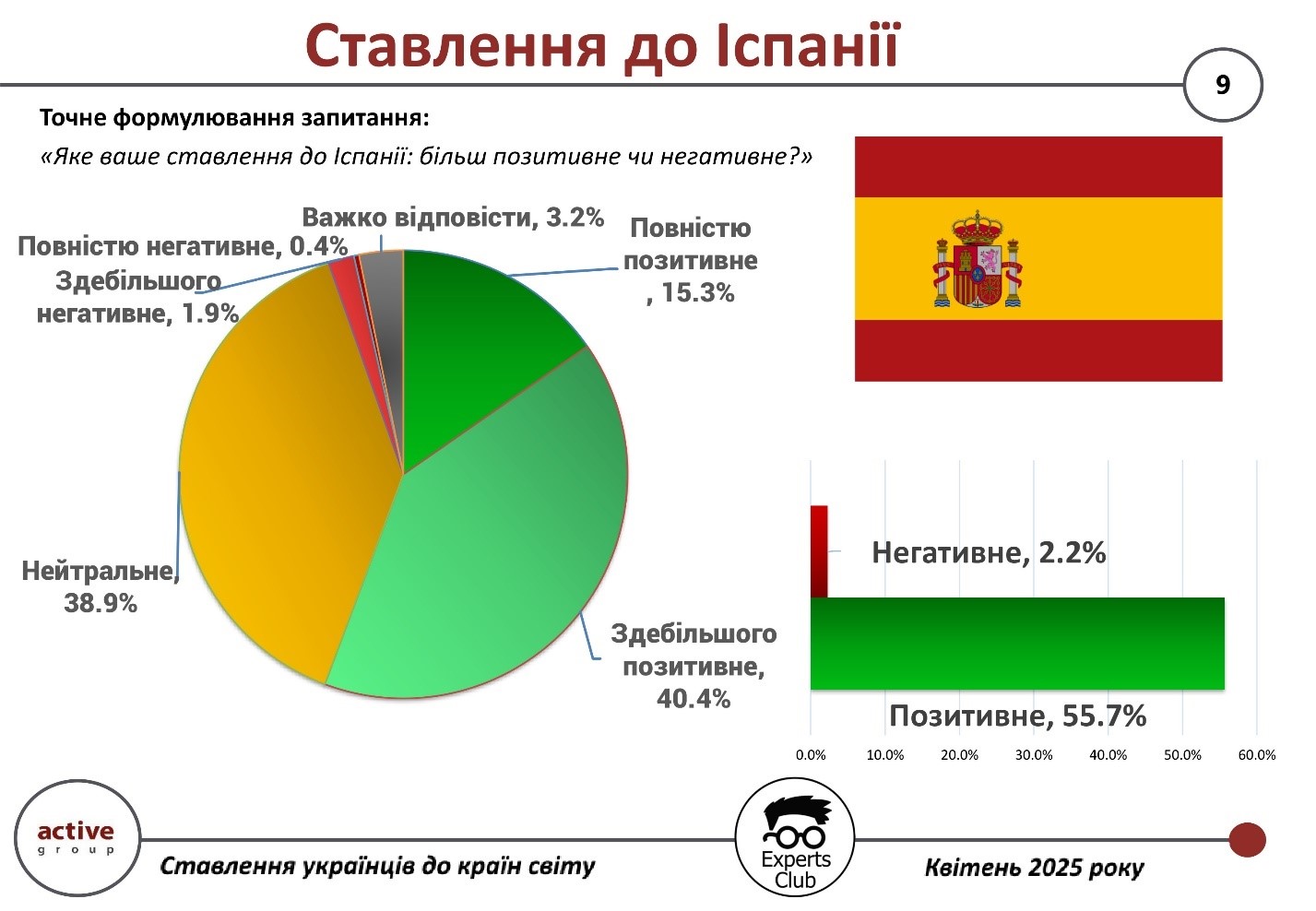
“Spain has a good image in the minds of our citizens, but unlike countries with consistent foreign policy activity towards Ukraine, its support is perceived less clearly. This explains the high level of neutral assessments,” commented Alexander Pozniy, co-founder of Active Group.
The poll shows that even against a positive backdrop, Ukrainians are carefully analyzing the degree of real involvement of international partners in deciding the fate of their country.
The presentation of the study is available at the link.
ACTIVE GROUP, DIPLOMACY, EXPERTS CLUB, Pozniy, SOCIOLOGY, URAKIN

Italy is among the countries that Ukrainians treat with respect and sympathy, but at the same time they are cautious. These data were obtained during a sociological survey conducted by Active Group in collaboration with Experts Club in April 2025.
According to the results, 59.6% of respondents have a positive perception of Italy (42.6% — mostly positive, 17% — completely positive). Only 3% of Ukrainians expressed a negative attitude (2.8% mostly negative, 0.2% completely negative), while a significant proportion — 35.1% — chose a neutral position. Another 2.2% were unable to answer.
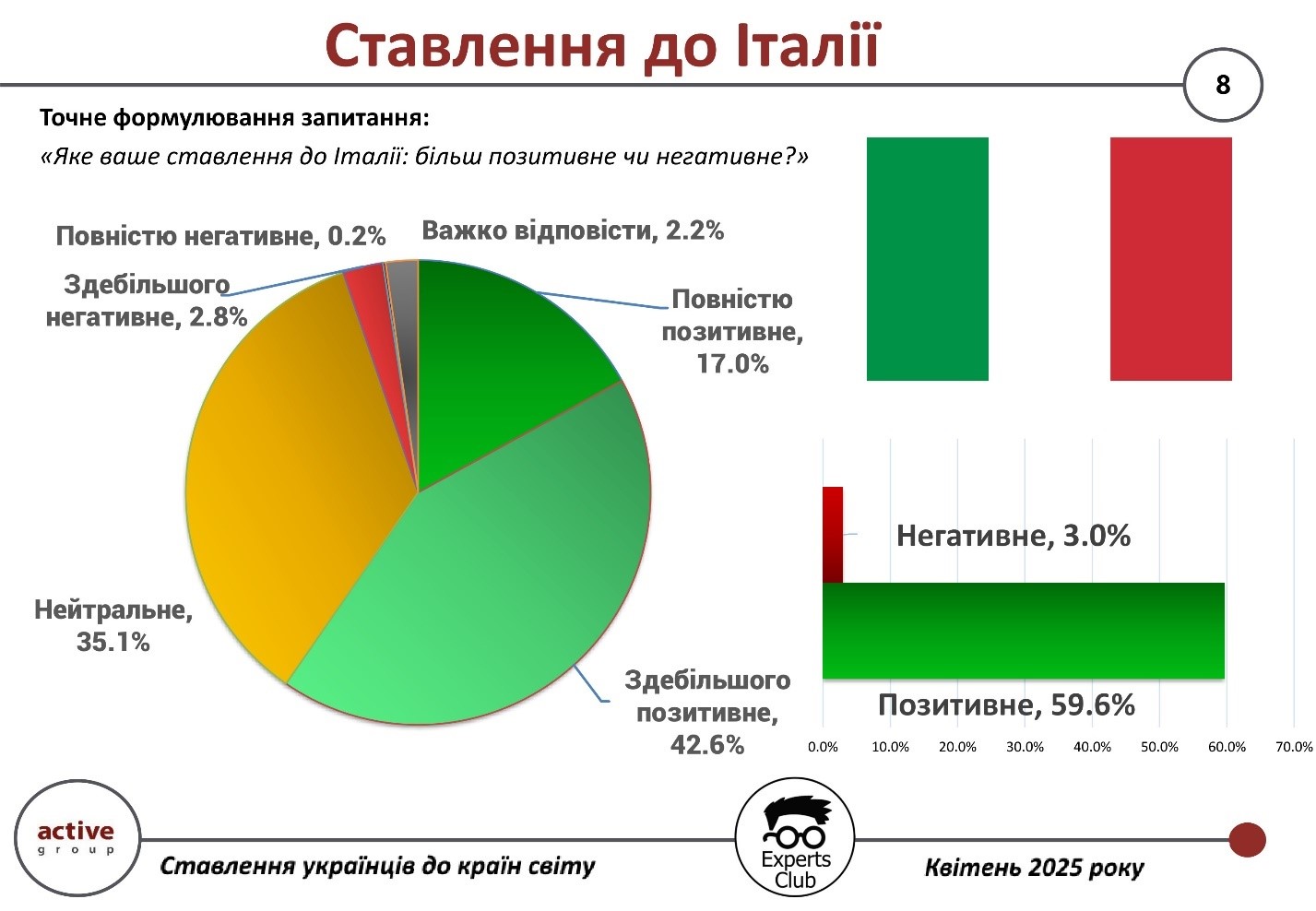
“Italy remains in the minds of Ukrainians as a country of traditional culture, historical monuments, and hospitality. At the same time, the relatively high proportion of neutral assessments indicates Italy’s lack of activity in the political or humanitarian sphere compared to other partners,” explained Maxim Urakin, founder of Experts Club.
The study shows that in order to deepen the positive image in Ukrainian society, it is important not only to have a good image, but also to provide concrete support at critical moments.
The presentation of the study is available at the link.
ACTIVE GROUP, DIPLOMACY, EXPERTS CLUB, Pozniy, SOCIOLOGY, URAKIN
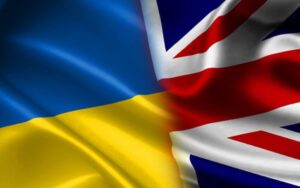
Great Britain is confidently included in the list of countries that Ukrainians view most favorably. This is evidenced by the results of a public opinion poll conducted by Active Group in collaboration with the Experts Club information and analytical center in April 2025.
According to the poll, 77.2% of Ukrainians have a positive perception of Great Britain (43.9% — completely positive, 33.3% — mostly positive). Only 8.6% of respondents expressed a negative attitude (5.4% mostly negative, 3.2% completely negative), while 12.7% chose a neutral position and 1.5% were undecided.

“London’s support during the war, both political and military, was not only noticed but also highly appreciated by Ukrainian society. The UK is perceived as a reliable ally,” commented Alexander Pozniy, co-founder of Active Group.
These results confirm not only the positive image of the UK in Ukraine, but also the strengthening of the strategic partnership at the level of public trust.
The presentation of the study is available at the link.
ACTIVE GROUP, DIPLOMACY, EXPERTS CLUB, Pozniy, SOCIOLOGY, URAKIN

France remains one of the most positively perceived countries among Ukrainians. This is evidenced by the results of a sociological survey conducted by Active Group in April 2025 with the participation of the information and analytical center Experts Club.
According to the survey, 74% of Ukrainian citizens have a positive attitude toward France: 47.7% are mostly positive, and another 26.4% are completely positive. Only 6.2% of respondents had a negative attitude (5% mostly negative, 1.1% completely negative), 18.3% chose a neutral position, and 1.5% of respondents were unable to decide on an answer.
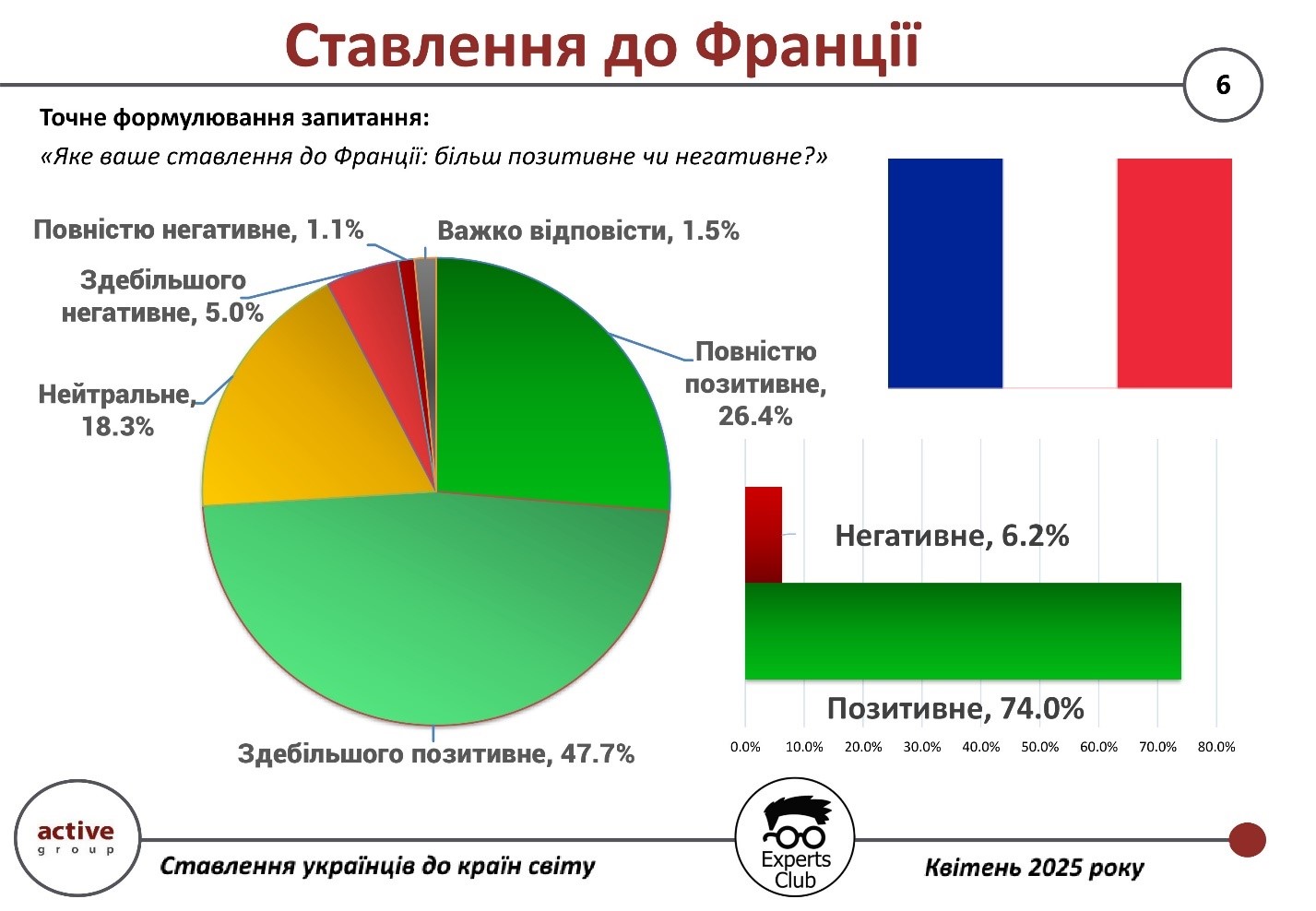
“For many Ukrainians, France is associated with military and humanitarian aid, diplomatic support in the European Union, and cultural sympathy. The high level of positive perception is natural,” emphasized Active Group co-founder Oleksandr Pozniy.
These figures confirm once again that Ukrainian society highly values those who demonstrate moral solidarity in difficult times.
The presentation of the study is available at the link.
ACTIVE GROUP, DIPLOMACY, EXPERTS CLUB, Pozniy, SOCIOLOGY, URAKIN

Egypt is a country that Ukrainians perceive as mostly neutral, with a slight positive bias. This is evidenced by the results of a sociological survey conducted by Active Group in collaboration with the Experts Club think tank in April 2025.
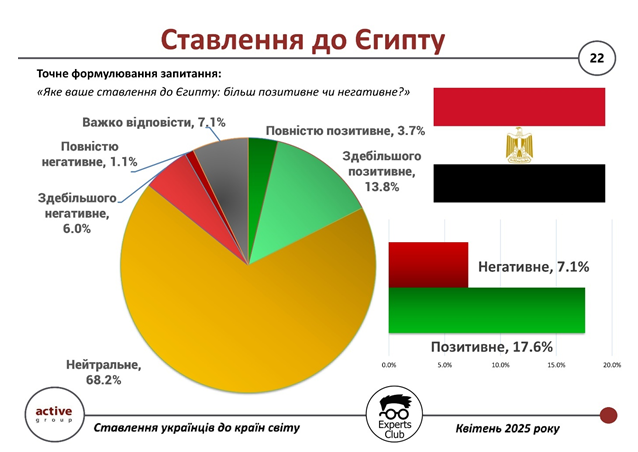
According to the survey, 68.2% of respondents expressed a neutral attitude toward Egypt, which is one of the highest figures among all countries. A total of 17.6% of Ukrainians have a positive attitude toward this country (13.8% mostly positive, 3.7% completely positive), while 7.1% have a negative perception (6.0% mostly negative, 1.1% completely negative). Another 7.1% of respondents abstained from answering.
“Egypt is traditionally associated in Ukraine mainly with tourism, but it has no significant political or humanitarian presence in the context of the war. This explains the high level of neutrality,” commented Oleksandr Pozniy, co-founder of Active Group.
In turn, Maxim Urakin, founder of Experts Club, noted that Egypt has been one of our country’s most profitable trading partners for many years, based on the positive trade balance. However, according to the expert, trade is currently a secondary factor in the minds of Ukrainians compared to moral and political support in the international arena.
At the same time, the neutral-positive perception of Egypt opens up opportunities for deeper cooperation at the diplomatic and cultural levels if the parties so desire.
The presentation of the study is available at the link.
ACTIVE GROUP, DIPLOMACY, EXPERTS CLUB, Pozniy, SOCIOLOGY, URAKIN
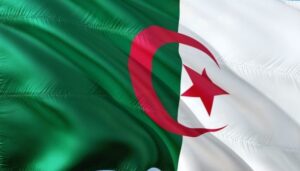
Among all countries covered by the sociological survey, Algeria turned out to be one of the least known to Ukrainian society, as evidenced by a record high level of neutral responses. These results were published by Active Group in partnership with the Experts Club think tank in April 2025.
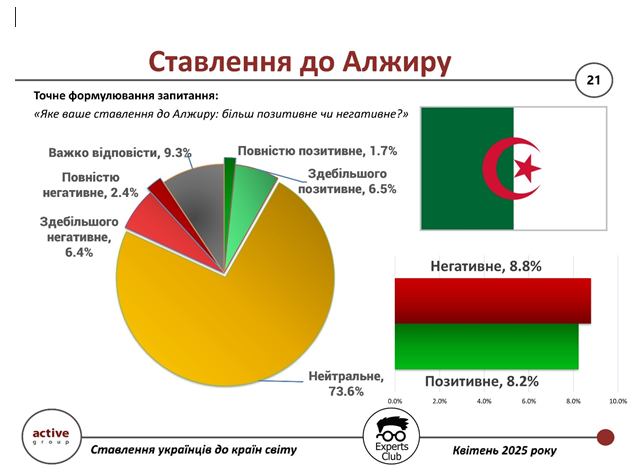
According to the survey, 73.6% of Ukrainians said they had a neutral attitude toward Algeria. Only 8.2% of respondents have a positive opinion of the country (6.5% mostly positive, 1.7% completely positive), while 8.8% expressed a negative opinion (6.4% mostly negative, 2.4% completely negative). Another 9.3% were unable to answer.
“Algeria remains terra incognita for most Ukrainians — a country about which there is a lack of information in the Ukrainian media, which explains the extremely high level of neutrality,” said Maxim Urakin, founder of Experts Club.
These results demonstrate the potential for developing intercultural dialogue, but also point to the limited diplomatic and humanitarian presence of Algeria in Ukraine.
The presentation of the study is available at the link.
ACTIVE GROUP, DIPLOMACY, EXPERTS CLUB, Pozniy, SOCIOLOGY, URAKIN